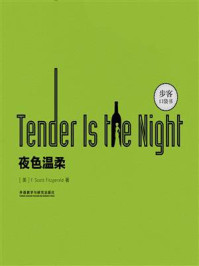




内森·罗斯柴尔德可能是(经通货膨胀调整的)有史以来第二富有的人——但他从没坐过汽车飞机、没打过电话、没用过电灯,而且死于一种在今天花几便士就能治好的病。如果他还活着,恐怕也会承认我的生活水平更高。
测试中可能遇到的词汇和知识:
septicaemia[,sɛptɪ'simɪə] 败血症
Taj Mahal 印度泰姬陵
antibiotics [,æntɪbaɪ'ɒtɪks] 抗生素
leech [liːtʃ] 水蛭,在东西方都曾被用来吸血治病
lay claim to 自以为
aspire [ə'spaɪə] 渴望,追求
阅读马上开始,建议您计算一下阅读整篇文章所用的时间,对照下方的参考值就可以评估出您的英文阅读水平。

Nathan Rothschild was the richest man in the world when he died in 1836. A list compiled by Forbes magazine, ranks him as the second richest man who ever lived – ahead of John D Rockefeller, and way ahead of Mexican telecoms mogul Carlos Slim and Bill Gates of Microsoft. (The richest was Roman general Crassus.) The figures used by Forbes are, of course, adjusted for inflation.
But what does “adjusted for inflation” mean? Rothschild died of septicaemia following an abscess, and in spite of buying the best medical attention available in Europe at the time. He had never been in a car, a train or an aircraft, nor visited the Taj Mahal, heard recorded music, seen a film, made a phone call or used electric light. Nor (despite the legends) could he have heard about the outcome of Waterloo until many hours after the battle was won. And he was dead at the age of 58 from an illness that could today be cured by an antibiotic costing a few pence. Was Rothschild really the second richest man in history?
Was he, in fact, richer than me? True, he could hire a fleet of carriages and eat off gold plate; but I would happily trade both for still being alive, and I suspect that Rothschild would have felt the same.
The question is prompted by a considerably more mundane event. Inflation in the eurozone has fallen to 0.3%, arousing concerns that there might actually be deflation in the months ahead – and that Eurostat, Europe's statistics agency, will soon declare that prices in Europe are lower than a year earlier.
That worry is premised on the existence of a qualitative difference between inflation and deflation. It is also premised on an assumption that deflation is undesirable.
Contemplation of the antibiotics not available in 1836 casts doubt on all these premises. It is generally accepted medical costs rise faster than general inflation – and in the US, where they represent more than 20% of consumer spending, they have contributed significantly to that general inflation. But medicine has become better – quite a lot better, even if too late for Rothschild.
Price indices are compiled by measuring the changes in the cost of buying a fixed bundle of goods chosen to represent the consumption of an average household. But what the average household buys changes with the arrival of new goods; and with changes in relative prices; as well as with variations – good and bad – in quality. Antibiotics replace leeches, carriages become more expensive, computers become more powerful, and the service from a call-centre deteriorates. That is how modern economies evolve and grow.
But price indices are ill equipped to cope with these changes. The bundle of goods Rothschild bought in his day might now be prohibitively expensive, even for him – the carriages, the plate – and is certainly very different from the bundle of goods Mr Gates would want to buy. The difference in consumption patterns of an average household is more dramatic still.
There are techniques for measuring and incorporating quality improvements, which are used for many consumer goods – but in the case of medicine, it is the amount of attention received that has increased rather than the price of treatments.
Overall, there are probably more upward than downward biases in the way inflation is calculated. But to claim that we know that prices have risen by 0.3% in the past year implies a degree of precision in our estimates to which we cannot lay claim nor realistically aspire.
请根据你所读到的文章内容,完成以下自测题目:
A.Capital accumulation.
B.Inflation.
C.Technological progress.
D.Statistics.
答案 (1)
A.Richer on the “ever lived list”.
B.Poorer on the “ever lived list”.
C.No change.
答案 (2)
A.The western population is becoming older.
B.Medical spending is taking a larger share in family spending.
C.Quality of medicine has become much better.
答案 (3)
(1) 答案:B.Inflation.解释:文章的大部分都在讨论通胀的概念和通胀如何衡量。
(2) 答案:B.Poorer on the “ever lived list”.解释:从文中可以得知,不考虑产品质量提升的通胀算法高估了通胀程度(upward bias),考虑的话就要向下修正。因此从前的富豪们就没有看起来那么富了。
(3) 答案:C.Quality of medicine has become much better.解释:文中解释道,对CPI的衡量,是基于“一篮子典型消费品”,忽略了每年都有的比重和产品质量的变化。


